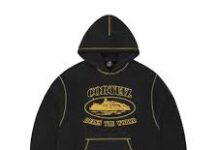If you’ve ever heard strange scurrying above your living room, or maybe you’ve noticed feathers or fur poking out from your fireplace, you’re not alone. Many homes in Cedar Rapids, thanks to our mix of older houses and nearby green spaces, see unexpected visits from wildlife—right down the chimney. While it might seem like a quirky problem, critters in your chimney can cause a whole range of headaches, from weird smells to real safety hazards. Before you grab a flashlight and go exploring, let’s walk through what you should really know about chimney animal removal.
How Do Animals End Up in Cedar Rapids Chimneys?
You might be wondering why your chimney is so popular with raccoons, squirrels, birds, or even bats. Well, the answer is pretty simple: chimneys are like ready-made homes for lots of wildlife. They’re sheltered, dark, and often warmer than the outdoors, especially in the colder months. That’s a tempting invitation for a mother raccoon looking for a nursery, or a batch of baby squirrels needing a cozy spot. Sometimes, birds like chimney swifts actually prefer these spaces for nesting. In spring, when animals are looking to start families, your chimney is prime real estate.
Spotting the Signs: Is Something Living in Your Chimney?
Before you ever see a tail or a pair of beady eyes, you’ll probably notice some clues that something’s up. Listen for scratching or shuffling, especially early in the morning or at dusk. Birds tend to chirp or flutter; mammals might make thumping or dragging noises. Sometimes, you’ll smell a musky odor or even notice an unusual draft. Other times, you might see nesting material—twigs, leaves, or insulation—falling into your fireplace. If you spot droppings or see critters actually entering or leaving the chimney, that’s a clear sign you have visitors.
| Animal | Time of Year | Why They Visit | Typical Signs |
|---|---|---|---|
| Raccoon | Spring & Summer | Safe denning spot for babies | Heavy thumping, strong odor, visible fur |
| Squirrel | Year-round | Warm nesting, food storage | Scratching, acorn fragments, nesting debris |
| Chimney Swift (Bird) | Late Spring to Early Fall | Nesting and raising chicks | Chirping, fluttering, twigs falling |
| Bat | Summer Nights | Roosting during daylight | High-pitched squeaks, droppings, nighttime activity |
Why You Shouldn’t DIY Chimney Animal Removal
It might be tempting to try to shoo away your furry or feathered guests yourself. But honestly, this can be risky. For one thing, some animals, like bats and birds, are protected by law. Disturbing them at the wrong time can actually get you into legal trouble. Also, mother animals might get aggressive if they feel threatened, and some critters can carry diseases or parasites. On top of that, without the right gear or know-how, you might accidentally trap an animal inside or damage your chimney. And if you block the flue, you could even create a fire hazard. It’s usually smarter (and safer) to call in a pro who knows how to handle wild animals humanely.
“A home without unwanted guests is a peaceful one, but when critters move in, it’s best to let those who understand their habits help them move out.”
Keeping Animals Out for Good
Once your chimney is critter-free, you’ll want to make sure the problem doesn’t return. The best way? Make your chimney less inviting. A good chimney cap is like a front door for your flue: it keeps animals out but still lets smoke escape. Regular chimney inspections are also super helpful, as they can catch small issues before they become big critter problems. Clear away any vines or branches that come close to your roof—these are like highways for squirrels and raccoons. Lastly, keep an eye on your attic and roof for any signs of animal activity, since these areas are often connected.
Wrapping Up: A Safe, Cozy Home Starts with a Clean Chimney
Dealing with animals in the chimney isn’t exactly anyone’s idea of fun, but it’s a reality for lots of Cedar Rapids homeowners. The key is to pay attention to the warning signs, act quickly, and trust animal removal experts when needed. With a bit of prevention and regular maintenance, you can enjoy your fireplace without worrying about unexpected guests setting up house above your head. So, next time you hear a ruckus by the hearth, remember: a little knowledge and the right help can make chimney animal removal a whole lot easier.
Read more : Cedar Rapids Chimney Sweep































